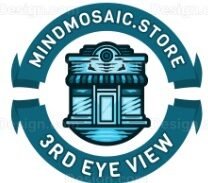WHAT IS LSD
LSD (lysergic acid diethylamide) is a hallucinogenic drug. Hallucinogens change the way people sense the world around them. It has synonyms or street names like acid, sugar cubes, white lightning, dose, tripping, blotter
What Does LSD Do?
LSD causes the senses of space, distance, and time to become altered. People might say they “hear” colors or “see” sounds, and have strange feelings and strong emotions.
Many users refer to an “acid trip” — when the effects don’t let up and can last for up to 12 hours at a time. LSD also can cause “bad trips” — when users experience panic, confusion, sadness, and scary images. Bad reactions can happen with the first use and a user may have flashbacks later, experiencing the feelings of a bad trip even after the drug wears off.
Because LSD also affects judgment and behavior, users might find themselves in a dangerous situation.
Physical changes include increased heart rate and blood pressure, muscle twitches and shaking, dilated pupils, sweating, sleeplessness, and loss of appetite.
While microdosing refers to a common process in developing medications, it also involves taking low doses of psychedelic drugs. In pharmacology, microdosing is a practice that aids in drug development and drug selection, where an individual takes a very small dose of the proposed medication. Researchers can then assess its pharmacokinetics, or how it interacts with the body.
In a pharmacological context, microdosing typically involves taking around 1% of a drug’s potential pharmacological dose. In the context of psychedelics, such as LSD, microdosing involves someone taking 5–10% of the dose that elicits psychoactive effects.
Psychedelics are a class of drugs that cause complex psychological, behavioral, and physiological effects by activating the serotonin 5-HT 2A receptors. Serotonin is a hormone that causes feelings of happiness and well-being and helps stabilize mood. Examples of psychedelics include LSD, magic mushrooms, ayahuasca, and N,N-Dimethyltryptamine, commonly known as DMT.
The practice of microdosing psychedelics dates back to at least the early 16th century, when a Spanish friar noted that Aztecs took low doses of psilocybin, the psychedelic ingredient in so-called magic mushrooms, to relieve fevers and rheumatism. The study of psychedelics gained popularity following the discovery of LSD in 1943. By some accounts, LSD helped researchers achieve several major scientific breakthroughs, including the discovery of the double-helix structure of DNA. The late Apple founder Steve Jobs even credits the substance as playing a major role in his life and achievements.
Yet despite mounting evidence suggesting that taking psychedelics may improve elements of creativity and cognition, research in the field has been stagnant due to government restrictions over concerns regarding recreational drug use. To date, there is little to no statistically-significant scientific evidence to support or reject the use of psychedelics or microdosing for positive health benefits.
